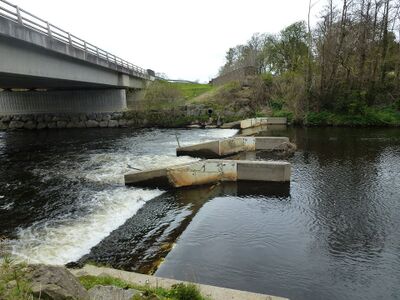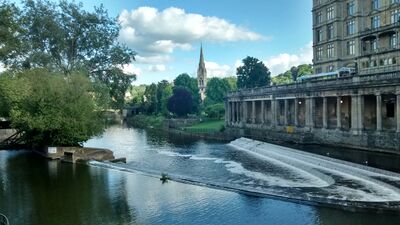Difference between revisions of "1D Weirs"
Rohan.king (talk | contribs) |
Rohan.king (talk | contribs) |
||
| Line 15: | Line 15: | ||
<br> | <br> | ||
*Crump weir | *Crump weir | ||
| + | |||
| + | [[File:Crump_weir - lamprey-barrier.jpg|border|400px]] | ||
<br> | <br> | ||
Revision as of 15:14, 21 July 2016
Page Under Construction
Introduction
A weir is a barrier across a designated flow path that is designed to alter flow characteristics. Most common weirs act as an obstruction, smaller but similar to a dam, that pools water behind it while allowing water to steadily flow over the top. Weirs within TUFLOW, like bridges, do not require data for length, Manning's n, divergence or bed slope so they are zero-length channels effectively.
Weir types that can be used within TUFLOW
- under construction
- Broad-crested weir
If the height of water above the weir crest is not greater than two times of the width of the crest of weir, the weir is called a Broad Crested weir.
- Crump weir
- Ogee-crested weir
An ogee-crested weir is a special type of weir, generally used as a spillway of a dam as shown in figure. The crest of an ogee weir slightly rises up from the inside edge (i.e., a slight hump on top of the weir) and after reaching the maximum rise of 0.115 H (where H is the height of the water above the inside edge) falls in a parabolic form over the edge of the weir.
- Rectangular weir
- Trapezoidal or Cippoletti weir
- V-notch weir
- Spillway
Irregular shaped weirs
- under construction
Operational Control
- under construction
Typical check files used
- under construction
Any further questions please email TUFLOW support: support@tuflow.com
Back to 1D Hydraulic Structures

